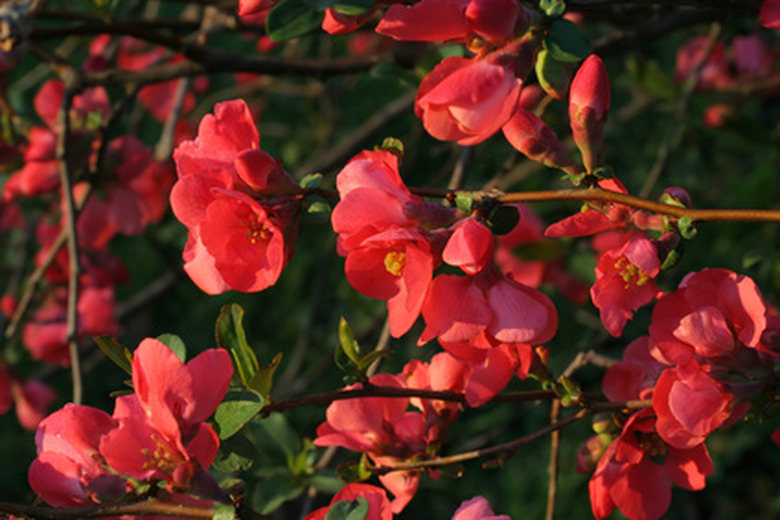How To Transplant Flowering Quince
Things Needed
- Shovel
- Wheelbarrow
- Water
- Mulch
Flowering quince (Chaenomeles speciosa) grows in hardiness zones 4 to 9 and is best transplanted during the dormant season in late winter to early spring, once frost danger has passed. In spring, the shrub bears red, pink or white flowers. Transplant flowering quince on an overcast day to avoid stressing the plant from too much heat.
Step 1
Select a new location for your flowering quince. The shrub averages 6 to 10 feet in height and width when mature. Full sun provides the best environment for flowering.
Step 2
Prepare the hole at the new location before you remove the flowering quince from its old location. Dig a hole that is two to three times as wide as the flowering quince shrub's root ball. If your quince is planted in a container you can determine this dimension easily. If it's planted in the ground use GardenLine's estimate of 9 to 12 inches of root ball per inch of trunk diameter.
- Flowering quince (Chaenomeles speciosa) grows in hardiness zones 4 to 9 and is best transplanted during the dormant season in late winter to early spring, once frost danger has passed.
- Prepare the hole at the new location before you remove the flowering quince from its old location.
Step 3
Remove any rocks, sticks or weeds from the hole so your tree can easily adapt to its new environment.
Step 4
Dig your flowering quince out of its hole. Begin digging at twice the size of the root ball. As you work down into the soil, move closer to the root ball. When you begin to see roots, work your way down. Tug the tree at its base to loosen the tree in its hole. Cut any remaining roots with a flat spade. Then pull the tree out of the hole.
- Remove any rocks, sticks or weeds from the hole so your tree can easily adapt to its new environment.
- Tug the tree at its base to loosen the tree in its hole.
Step 5
Place the flowering quince in a wheelbarrow and wheel it over to its new location. Set the tree in the hole at the same depth as it was planted in the old location. You can identify this from the soil line on the trunk. Spread out the roots with your fingers.
Step 6
Fill in the hole with soil. When it's full, water so the soil settles naturally. Add water until the soil becomes saturated.
- Place the flowering quince in a wheelbarrow and wheel it over to its new location.
- You can identify this from the soil line on the trunk.
Step 7
Mulch the soil around the transplanted shrub with 2 to 3 inches of mulch.
